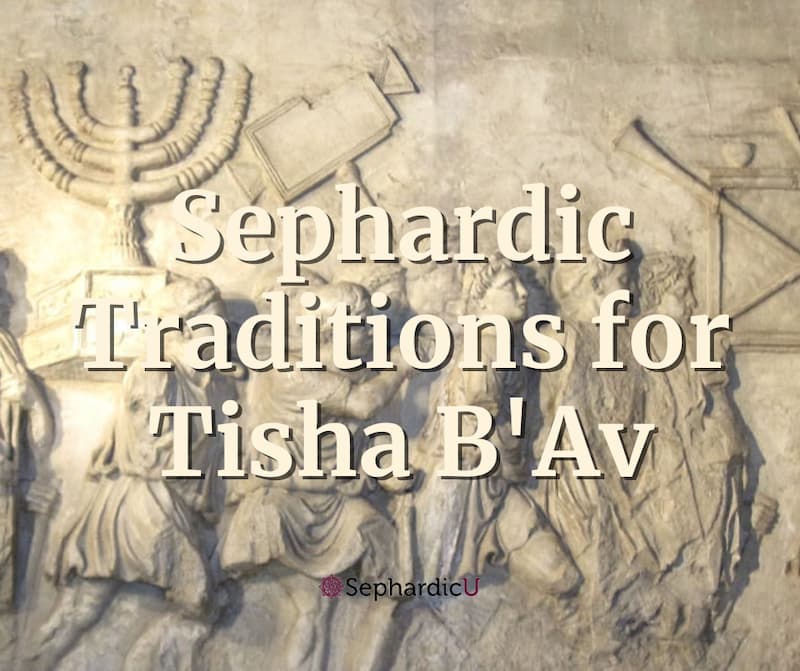Introduction
Tisha B’Av, the ninth day of the Hebrew month of Av, is a day of profound mourning and fasting for Jews worldwide. This solemn day commemorates the destruction of both the First and Second Temples in Jerusalem, along with other tragic events in Jewish history. While all Jewish communities observe Tisha B’Av, Sephardic Jews have distinct traditions and practices that add depth and meaning to this day of remembrance.
The Significance of Tisha B’Av
Tisha B’Av holds a unique place in Jewish history as a day of collective grief. The day is marked by fasting, prayer, and the reading of the Book of Lamentations (Eicha), reflecting on the suffering and loss experienced by the Jewish people. For Sephardic Jews, these observances are enriched by customs passed down through generations.
Sephardic Observances of Tisha B’Av
To understand the specific observances of Tisha B’Av among Sephardic Jews, let’s explore the traditions in more detail:
| Observance | Description |
|---|---|
| Fasting | Observed from sunset on the eve of Tisha B’Av until nightfall the following day. Includes refraining from eating, drinking, and other physical comforts. |
| Reading of Eicha (Lamentations) | The Book of Lamentations is read in a mournful tune, often in dim lighting to evoke the sense of mourning. |
| Recitation of Kinot | Special elegies and dirges called Kinot are recited, lamenting the destruction of the Temples and other tragedies. |
| Sitting on Low Chairs or the Floor | During the reading of Eicha and Kinot, Sephardic Jews sit on low chairs or the floor to symbolize mourning. |
| Avoiding Torah Study | Torah study is generally avoided on Tisha B’Av because it brings joy. Only texts related to mourning and tragedy are studied. |
| Wearing Non-Leather Shoes | Leather shoes are considered a comfort, so non-leather footwear is worn as a sign of humility and mourning. |
| Restrictions on Greetings | Greetings are typically avoided, and when necessary, kept subdued to reflect the somber mood of the day. |
| Posture of Mourning | Sephardic Jews may refrain from their usual posture and demeanor, adopting a more reflective and subdued attitude. |
Unique Sephardic Customs
While the core observances are similar across Jewish communities, Sephardic Jews have unique customs that differentiate their Tisha B’Av practices:
- Poignant Melodies: Sephardic Jews have distinct tunes for the reading of Eicha and Kinot, which are often passed down through families and communities. For examples of these melodies, you can listen to recordings at Sephardic Pizmonim Project.
- Special Prayers: Additional prayers and supplications specific to Sephardic liturgy are included, emphasizing themes of loss and hope for redemption. Some of these prayers can be found in Sephardic prayer books or online at Sephardic Hazzanut.
- Community Gatherings: Sephardic communities often come together for the reading of Eicha and Kinot, enhancing the communal aspect of mourning. To find out more about local Sephardic community events, you can visit our Sephardic Synagogue Directory.
Conclusion
Tisha B’Av serves as a powerful reminder of the resilience and endurance of the Jewish people. For Sephardic Jews, the observance of this day is marked by deep-rooted traditions that honor their unique heritage while connecting them to the broader Jewish community. Through fasting, prayer, and reflection, Sephardic Jews commemorate the tragedies of the past and express hope for a future of rebuilding and peace.
By understanding and embracing these practices, we gain a deeper appreciation for the rich tapestry of Jewish customs and the enduring spirit of the Sephardic community.





Ohr HaChaim Yomi – Emor